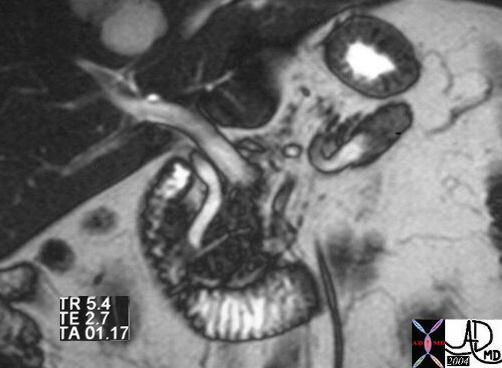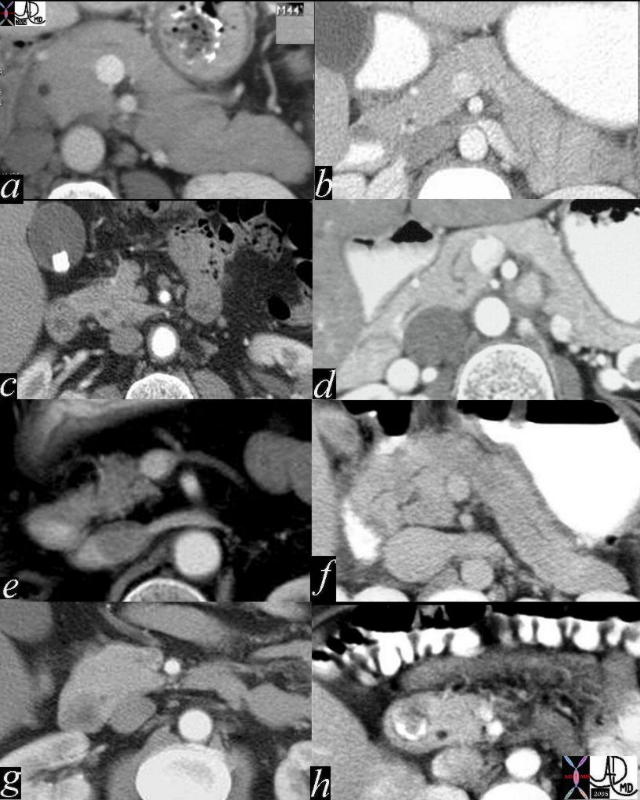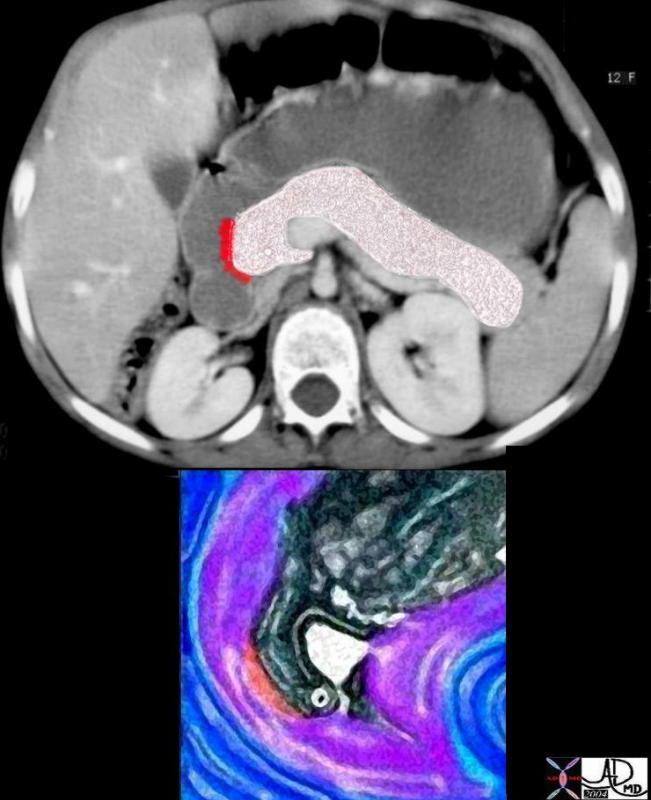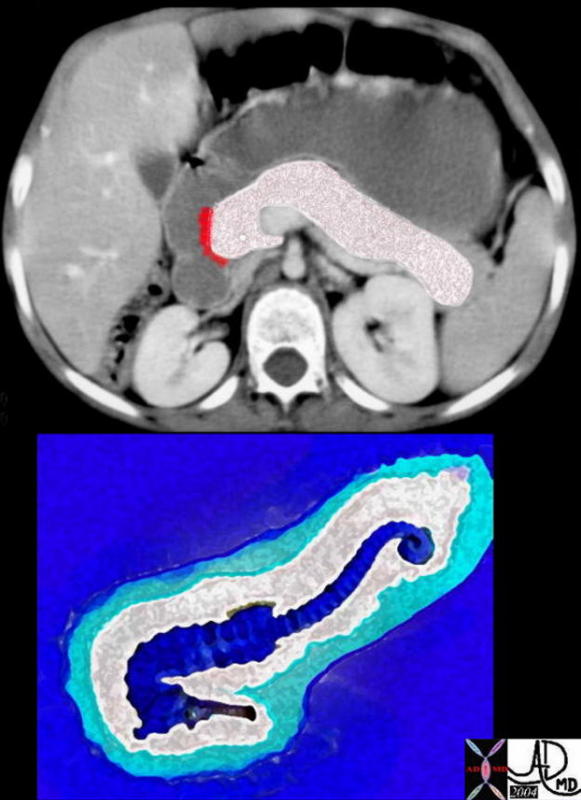Introduction
The head of the pancres lies within the duodenal curve and is flattened.

In this coronally acquired T2 weighted MRI from an MRCP the head of the pancreas is seen nestled in the c-sweep of the duodenum. The bile duct courses through the head toward the pancreatic duct as they merge (usually) to form a common channel in the ampulla. The SMV surfaces from the bacp of the head of the pancreas to join the portal vein 28070b Courtesy Ashley Davidoff MD anatomy imaging radiology MRI T2
From the lower left part of the head the hook-like uncinate process projects upwards to the left and behind the superior mesenteric vessels.
The distal end of the common bile duct passes behind the upper border of the head of the pancreas. The bile duct travels posteriorly to the head and then enters the substance of the head. Since the CBD has its origin embryologically with the CBD, one can correctly assume that the pancreas that surrounds the CBD arises from the ventral anlage.
Embryologically and anatomically the head has two parts. The anterior portion originates from the dorsal part which also gives rise to the body and tail. The part of the head that is posterior and that houses the bile duct, ampulla and papilla originates from the ventral pancreas. The ventral portion of the pancreas is sometimes known as the pancreas of Winslow(History of Medicine – Cecelia C Mettler)
Uncinate Process
From the posterior aspect of the head, a hook shaped structure appropriately called the uncinate process curls posteriorly. It is beaked shaped with biconcave anterior and posterior borders. It is of variable size, and extends to the left to occupy the space between the SMV and SMA anteriorly, and the the third and fourth part of the duodenum posteriorly. The uncinate process also lies anterior to the inferior vena cava and aorta.
In this CT scan of the abdomen the head and uncinate process are well seen curling around the SMV medially and abutting the
duodenum laterally and posteriorly. Both the CBD and pancreatic duct are seen in the head. The shape is reminiscent of a
birds head. Note the biconcavity of the beak. 26612 Courtesy Ashley Davidoff MD

The ventral remnant has a variable shape as it relates to theduodenu. It is mostly an inverted “c” and occupies about 1/3 to 1/4 of the circumference. (a-f). Sometimes it partially or totally surrounds the duodenum resulting in the entity of annular pancreas (h) 41505c02 Courtesy Ashley DAvidoff MD
The shape of the had of the pancreas, paticulalrly with inverted “c” component that is attached to the duodenum reminds one of the shape of a bird’s head – almost like a woodpecker’s head.

The shape of the had of the pancreas, paticulalrly with inverted “c” component that is attached to the duodenum
reminds one of the shape of a bird’s head – almost like a woodpecker’s head. 39934b02 Courtesy Ashley Davidoff MD
At other times it looks more like the head of a seahorse.

At other times the head of thepancreas looks almost like the the head of a seahorse. 39934b03
Courtesy Ashley Davidoff MD

